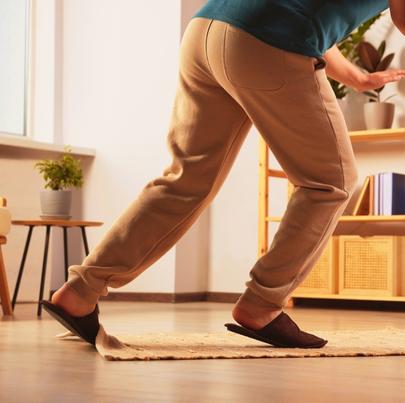The Centers for Disease Control and Prevention states that over 1.4 million elderly people reside in nursing homes. As such, long-term elderly care is likely an issue that many Illinois families have already confronted at some point. Many of these families prioritize safety and quality of care when selecting a care facility for their elderly relatives. In making these decisions, these families often focus on signs of nursing home neglect. In addition, however, the safety of a facility’s environment must also be evaluated.

Fall hazards
According to the CDC, fall injuries are a serious concern for the elderly. Approximately 1,800 nursing home residents die from these incidents annually. In about 10 to 20 percent of cases, falls in nursing homes result in serious injuries; fractures occur 2 to 6 percent of the time. The CDC identifies flooring, furniture placement, stairways and steps as primary hazards. All of these potential dangers may be easily addressed through safety policies.
The CDC notes that floors should be clear of slippery surfaces or obstacles. Throw rugs should be secured and furniture should not obstruct paths. Electrical wires and cords should be coiled, taped or otherwise placed out of walkways to ensure that they do not pose tripping hazards. Objects like books, blankets and papers that have fallen on the ground should be picked up immediately.
Likewise, steps and stairways should remain free of small fallen items. Broken and uneven steps must also be repaired as quickly as possible. The area should be adequately lit, and light switches should be installed at both the bottoms and tops of stairways. As many nursing homes have patients with limited mobility, stair alternatives should also be provided, such as elevators or chair lifts. Handrails should be sturdy and installed on both sides of the stairs.
Given the severity of fall accidents for the elderly, nursing homes must address these hazards. Facilities which do not have policies regarding such safety hazards may arguably be engaging in nursing home neglect.
Warning bells
Nursing home patients most often fall in their own rooms, explains a 2009 study in the Archives of Gerontology and Geriatrics. Commonly, these falls occur when patients attempt to leave or get into their beds without assistance. Bed-exit alarms are one widespread method of addressing this problem. These devices are designed to notify staff when a patient leaves bed. The alarms may be attached to residents’ garments or onto their beds.
Bed-exit alarms enjoy an endorsement from the Joint Commission on Accreditation of Healthcare Organizations and are used in many nursing homes. However, the efficacy of these alarms is currently under debate. Further studies may be necessary to determine whether bed-exit alarms actually prevent falls.
Protection from other residents
The consequences of falling injuries are severe, but they are not the only harms from which patients need protection. Nursing homes are also responsible for maintaining a safe environment which is free of abuse from other residents. According to the National Center on Elder Abuse, resident-to-resident abuse comprises 22 percent of the abuse complaints in nursing homes. Many of these assaults were perpetrated by residents suffering from Alzheimer’s and other types of dementia.
According to the Alzheimer’s Association, almost 60 percent of residents in nursing homes are victims of dementia. Violent outbreaks are not uncommon among these patients. As such, nursing homes must take precautions to ensure the safety of their dementia patients as well as all other residents.
Placing dementia patients in locked special care units is one means of preventing dementia-related attacks. However, it is important to recognize that many nursing homes have used “special care units” as a pure marketing scheme. Those with relatives suffering from dementia may want to investigate the details of nursing homes’ special care units. The Alzheimer’s Association recommends reviewing these units for compliance with the standards described in the Key Elements of Dementia Care.
Researching nursing homes in Illinois
Those researching nursing homes in Illinois may find it beneficial to review the list of investigations performed in accordance with the state’s Nursing Home Care Act. Under this law, long-term health facilities are required to comply with certain standards. Many of these relate to the mental and physical health of patients. Should a facility have a complaint lodged against it, the report will be received by the state’s Department of Public Health.
The DPH compiles a quarterly list which identifies all facilities against which the department has taken action. These include notifications for penalties, license revocations, refusal of license renewal, license suspension and conditional license issuance. The DPH lists must, by law, be available to the public for free.
These lists will also contain certain details about the surrounding investigations and circumstances which gave rise to the department’s actions. This may include identifying information about specific people against which actions were directed. If any penalties were sought by the DPH, these will also be available. When applicable, the final result of actions will be provided.
Those who believe their loved ones are not in a safe environment may want to review these lists. This may provide an indication of whether a facility suffers from systemic abuse problems.
Nursing home safety must be addressed
The issue of safe elder care is not one which is going away any time soon. The CDC estimates that approximately 3 million elderly patients will reside in nursing homes by 2030. Given this, it is important to recognize the value of identifying and implementing effective nursing home safety standards. Part of this involves legal action against nursing homes that fail to provide safe environments for their residents. Those who wish to learn more about pursuing litigation against an elder care facility may wish to speak with a nursing home neglect attorney.







